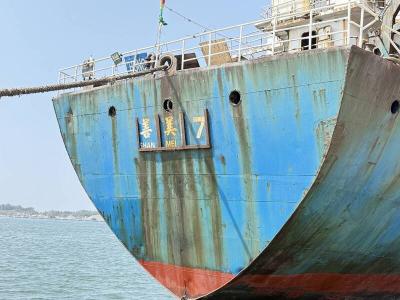The newly built Hushan Reservoir (湖山水庫) in southern Taiwan is expected to become operational in July, supplying water to Yunlin County, which has a land subsidence problem caused by groundwater overdraft, according to the Ministry of Economic Affairs’ Water Resources Agency.
Last year, 75 percent of the land subsidence in Taiwan occurred in Yunlin over a 600km2 area, agency director-general Wang Ruei-de (王瑞德) said.
The groundwater overdraft problem in Yunlin is expected to ease after Hushan Reservoir starts working at full capacity, he said.
The reservoir, completed in December last year after 14 years of construction, began collecting water on Saturday last week and is scheduled to go into service in July, Wang said.
Built on the largest dam in the nation, it has an optimal capacity of 52.18 million cubic meters and a catchment area of 6.58km2.
Initially, it is to supply about 50,000 tonnes of water per day to consumers, Wang said, adding that it will take another 12 to 18 months before the reservoir starts working at full capacity.
By June next year, water supplied to Yunlin from Hushan Reservoir and the nearby Jiji Dam is expected to reach 432,000 tonnes per day, according to the agency.
Amid growing environmental awareness, there has been speculation that Taiwan will stop building such structures, but agency officials said there are still many suitable areas in the nation to accommodate reservoirs.
However, the agency will not build one without the consent of local residents, the officials said.
During the construction of Hushan Reservoir, work was delayed several times due to issues related to environmental protection and the preservation of historic sites.

An undersea cable to Penghu County has been severed, the Ministry of Digital Affairs said today, with a Chinese-funded ship suspected of being responsible. It comes just a month after a Chinese ship was suspected of severing an undersea cable north of Keelung Harbor. The National Communications and Cyber Security Center received a report at 3:03am today from Chunghwa Telecom that the No. 3 cable from Taiwan to Penghu was severed 14.7km off the coast of Tainan, the Ministry of Digital Affairs said. The Coast Guard Administration (CGA) upon receiving a report from Chunghwa Telecom began to monitor the Togolese-flagged Hong Tai (宏泰)

A cat named Mikan (蜜柑) has brought in revenue of more than NT$10 million (US$305,390) for the Kaohsiung MRT last year. Mikan, born on April 4, 2020, was a stray cat before being adopted by personnel of Kaohsiung MRT’s Ciaotou Sugar Refinery Station. Mikan was named after a Japanese term for mandarin orange due to his color and because he looks like an orange when curled up. He was named “station master” of Ciaotou Sugar Refinery Station in September 2020, and has since become famous. With Kaohsiung MRT’s branding, along with the release of a set of cultural and creative products, station master Mikan

RISING TOURISM: A survey showed that tourist visits increased by 35 percent last year, while newly created attractions contributed almost half of the growth Changhua County’s Lukang Old Street (鹿港老街) and its surrounding historical area clinched first place among Taiwan’s most successful tourist attractions last year, while no location in eastern Taiwan achieved a spot in the top 20 list, the Tourism Administration said. The listing was created by the Tourism Administration’s Forward-looking Tourism Policy Research office. Last year, the Lukang Old Street and its surrounding area had 17.3 million visitors, more than the 16 million visitors for the Wenhua Road Night Market (文化路夜市) in Chiayi City and 14.5 million visitors at Tainan’s Anping (安平) historical area, it said. The Taipei 101 skyscraper and its environs —

Taiwan on Friday said a New Zealand hamburger restaurant has apologized for a racist remark to a Taiwanese customer after reports that it had first apologized to China sparked outrage in Taiwan. An image posted on Threads by a Taiwanese who ate at Fergburger in Queenstown showed that their receipt dated Sunday last week included the words “Ching Chang,” a racial slur. The Chinese Consulate-General in Christchurch in a statement on Thursday said it had received and accepted an apology from the restaurant over the incident. The comment triggered an online furor among Taiwanese who saw it as an insult to the